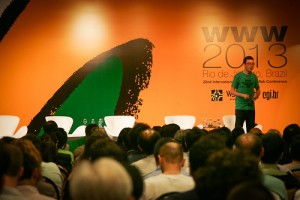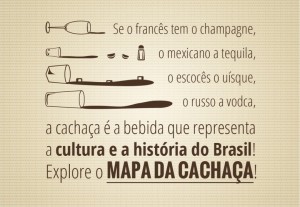Today marks the final day of the WWW2013 conference. We are pleased to announce we had 1,097 registered participants and 858 people follow the conference streaming live online and saw 5,072 tweets under the hashtag #www2013.
The location of WWW2014 conference was selected and announced this afternoon. WWW2014 will be held in Seoul, South Korea in April of 2014.
Our final keynote speaker, Jon Kleinberg presented his research about the how information flows through populations on the Internet. In his research, Kleinberg examined what makes certain quotes and text on the internet memorable and attempted to predict what kind of quotes will go viral. He mentioned http://memetracker.org/ as a visualizing tool for trending phrases and words thorugh the web.

“Mapping out social networks quantitatively is a new concept,” explained Kleinberg. The web is powered by feed back loops, according to Kleinberg, the web knows you better than you know yourself. If you would like to learn more, check out his paper on the subject: http://www.pnas.org/content/109/16/5962
The conference best paper award was granted to “No Country for Old Members: User Lifecycle and Linguist Change in Online Communities”, by Stanford University members Cristian Danescu-Niculescu-Mizil, Robert West, Dan Jurafsky, Jure Leskovec, Christopher Potts. You may find it here: http://cs.stanford.edu/people/jure/pubs/language-www13.pdf
Other highlights:
- Data Visualization Panel: Fernada Viegas and Martin Wattenberg from Google explained the functions of Google+ Ripples: /proceedings/p1389.pdf; Jennifer Fernquist and Ed H. Chi, also Google members, talked about the Perception and Understanding of Social Annotations in Web Search: http://research.google.com/pubs/pub38116.html
-CRM Panel: can the lack of standardization cause problems with interoperability? Check out this: https://wiki.softwarelivre.org/pub/Main/DeiviKuhn/Html5_and_DRM.pdf and this:http://www.w3.org/QA/2013/05/perspectives_on_encrypted_medi.html
We would like to thank all the presenters and participants. You can check out slides, papers and more from the conference are available on the following websites:
Slides: http://eventifier.co/event/www2013/
Papers: /papers/
Highlights from day 5: https://storify.com/gabiagustini/www2013-conference-day-5
Highlights from day 4: https://storify.com/gabiagustini/www2013-conference-day-4
Highlights from day 3: https://storify.com/gabiagustini/www2013-conference-3rd-day
Highlights from day 2: https://storify.com/gabiagustini/www2013-conference-2nd-day-1
Highlights from day 1: https://storify.com/gabiagustini/www-conference-1st-day
]]>








 ]]>
]]>
 The fourth day of the Conference, Brazilian neuroscientist Miguel Nicolelis presented his projects and research concerned with computer-brain interfaces that allow actions to be transmitted through the brain directly to computers, without passing through organs or muscles. The experiment started in 2003. On of his inspirations was to create the possibility for people who had suffered from serious neurological injuries to be able to send commands from the brain to mechanical prosthetics, as exemplified in the project, Walking Again. Nicolelis emphasized that the human brain is not something that is able to be reproduced on a computer. “We are protected by copyright,” he joked.
The fourth day of the Conference, Brazilian neuroscientist Miguel Nicolelis presented his projects and research concerned with computer-brain interfaces that allow actions to be transmitted through the brain directly to computers, without passing through organs or muscles. The experiment started in 2003. On of his inspirations was to create the possibility for people who had suffered from serious neurological injuries to be able to send commands from the brain to mechanical prosthetics, as exemplified in the project, Walking Again. Nicolelis emphasized that the human brain is not something that is able to be reproduced on a computer. “We are protected by copyright,” he joked.



